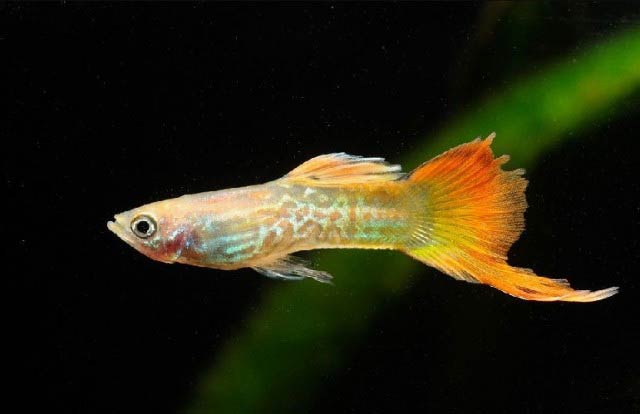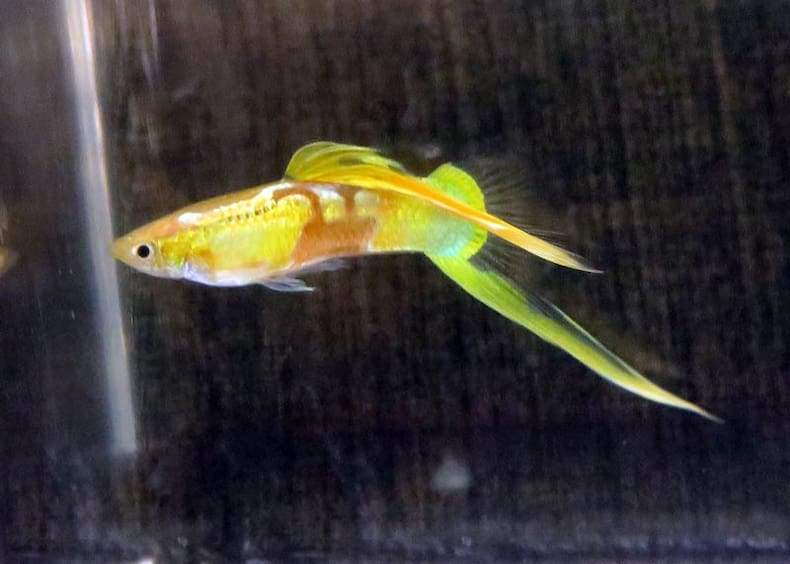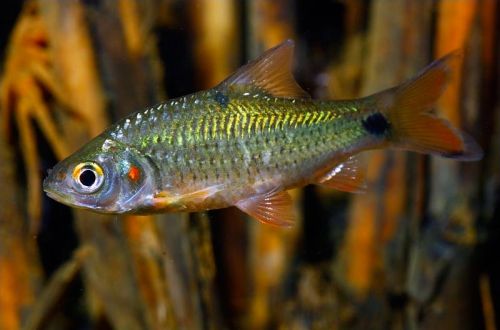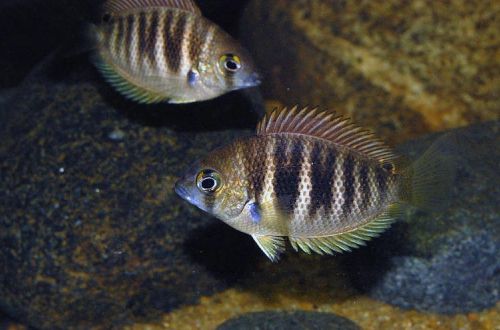
Guppy swordtails
Swordtail guppies, scientific name Poecilia reticulata (Swordtail breed), belong to the Poeciliidae family. The fish got its name because of the special structure of the caudal fin, which has elongated lower rays resembling a sword blade. Breeders also bred strains called “double swords”. They have increased upper rays in addition to the lower ones. The coloring and pattern of the body can be very diverse and combine the features of other Guppy breeds.

Not to be confused with ordinary swordtails, which are an independent species of aquarium fish, although belonging to the same family.
Brief information:
- The volume of the aquarium – from 40 liters.
- Temperature – 17-28°C
- Value pH — 7.0–8.5
- Water hardness – soft to high (10-30 dGH)
- Substrate type – any
- Lighting – moderate or bright
- Brackish water is permissible in a concentration of up to 15 g per 1 liter
- Water movement – light or moderate
- The size of the fish is 3–6 cm.
- Food – any food
- Temperament – peaceful
- Content alone, in pairs or in a group
Maintenance and care

The maintenance of Guppies of swordtails will not cause difficulties even for a novice aquarist. The fish are modest in size, so they do not need large aquariums, they are peaceful and perfectly adapt to various conditions. They can live both in empty tanks and among dense thickets of plants; successfully tolerate relatively low temperatures (up to 17°C) and high pH and GH values, including brackish water.
The minimum set of equipment includes an aerator and / or airlift filter, provided that the aquarium is large enough and contains only a few fish.
Aquarium maintenance consists of standard procedures: weekly replacement of part of the water with fresh water, regular removal of organic waste (food leftovers, excrement), equipment maintenance.
Food. An omnivorous species, they will accept most popular dry, frozen and live foods. Being an artificially bred variety of the Swordtail Guppy, it is initially accustomed to taking dry food, which can become the basis of a daily diet.
behavior and compatibility. There are no intraspecific conflicts. Males compete for the attention of females, but this is demonstrative and no cases of skirmishes have been observed. Compatible with other types of comparable size. It is worth avoiding overly active, aggressive and territorial fish, as well as those who are prone to damage (bite off, pinch) other people’s fins. For example, some types of barbs “sin” with this.





